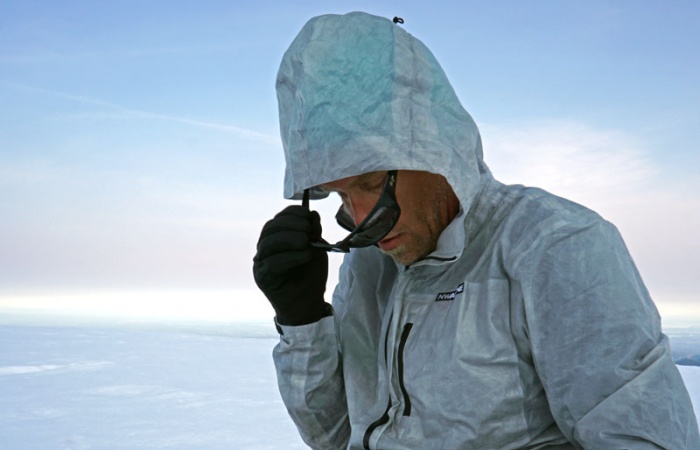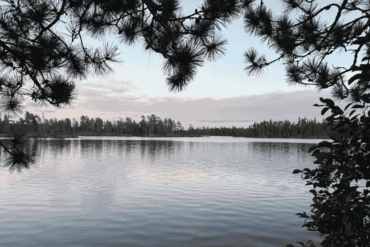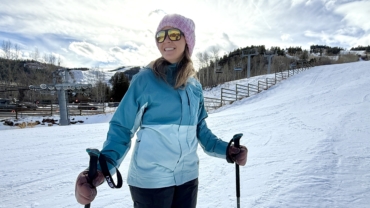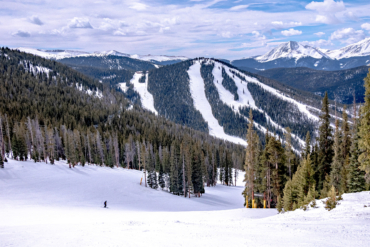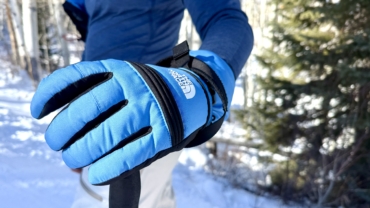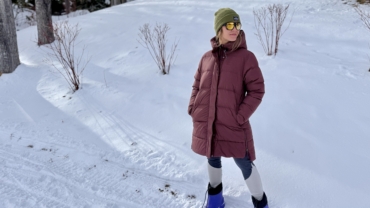Despite the cold, winter poses serious risks from the sun. Intense solar exposure and reflection off snow can cause temporary blindness. Here are some tips to protect your vision.
I remember seeing a picture of alpinist Pete Takeda with a pair of makeshift sunglasses rigged from a shoelace and duct tape. Takeda forgot to bring his prescription sunglasses on a climbing trip to the Canadian Rockies. In “get it done” fashion, Takeda fashioned ersatz eye protection from what he had.
Dropped half your rack? That sucks, but you’ll make do. Running short on fuel? Just wring water out of your shirt. But lost sunglasses? That is a serious oversight. And here’s why.
Snow Blindness: What It Is

Referred to as “photokeratitis” in medical circles, snow blindness is actually a sunburn on your eye (go ahead and scream).
Like skin, the eye has a layer of epithelial cells that are extremely sensitive to the sun’s damaging rays. Compounded by the mirroring effects of snow, water, and sand, refractive light can burn this delicate layer of cells in as short as one hour.
How To Identify ‘Photokeratitis’
Oh, you’ll feel this one. While the eyes will feel normal during exposure, like most sunburns, the sensation will be delayed 6–12 hours, possibly rearing its head at night. If so, you might wake up to:
- Tears
- Pain
- Gritty eyes, feeling like particles of sand in the eyes
- Swollen eyelids
- Tender eyes
- Discomfort when exposed to light
- Hazy vison
- Worst case: Complete loss of sight
Where It’s Found
Snow and ice reflect light, including the damaging UV rays from the sun. This is compounded at altitude, where Earth’s protective atmosphere is thinner, letting these damaging rays slip through the atmosphere to come in contact with skiers, climbers, and other patrons of the high slopes.

Chad Smith, development director at Vuarnet, said when combined “these factors can double your risk of getting sunburned eyes, compared to being outdoors at lower altitudes in the summertime.”
How To Avoid Snow Blindness
Think of the eyes like specialized skin. If you are applying sunscreen or wearing sun-blocking clothing, you should also protect your eyes. And just as you ought to wear sunscreen on cloudy days, you should also wear sunglasses.
Smith recommends looking for lenses that “filter out massive amounts of damaging HEV light also known as Blue Light or … Infrared.” According to Smith:
- Look for sunglasses with lenses that block 100 percent of UVA, UVB, and UVC rays
- For maximum protection from sunlight and wind, look for sunglasses (or goggles) that have side shields to block sunlight from all directions

Traveling high for an extended period? It’s not a bad idea to bring a spare set of sunglasses.
Forgot them like Takeda did? A makeshift pair can be manufactured from cardboard, foam pads, or duct tape. Cut narrow horizontal slits to look through.
Individuals with fairer skin and lighter eyes are more vulnerable to the sun’s intense rays and should take extra precautions when out in the sun.
Treatment
- Remove contact lenses
- Treat painful eyes with eye drops or ointment
- NSAIDs (e.g., ibuprofen) can reduce pain and swelling
- Bright sun will be annoying; eyepatches can protect the eyes and block sunlight
- A cold compress can reduce the pain; wrap a shirt around a snowball and apply to the eyes
Worst-Case Scenario
If exposed long enough, snow blindness can force the optic nerve to stop sensing light, causing temporary blindness. Fortunately, the cells on the surface of the eye regenerate quickly; pain should subside within 18 hours and be fully restored in 24–48 hours.

